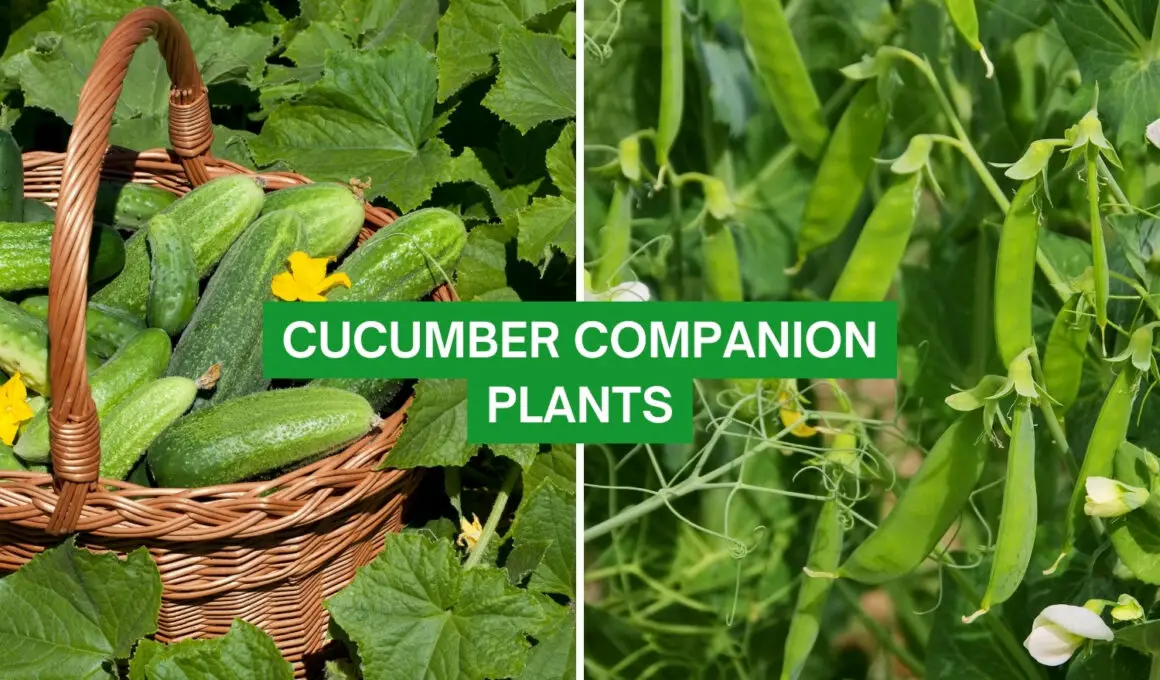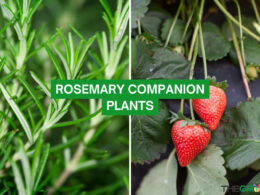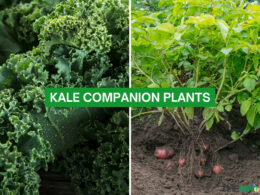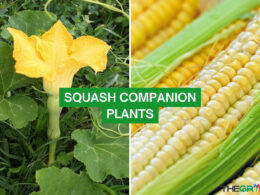In This Article Show
Companion planting is a tried and true method used by generations of gardeners to enhance plant health, increase yields, and naturally manage pests.
This approach involves strategically planting certain crops next to each other because of the mutual benefits they can offer. And yes, even cucumbers have their preferred plant companions!
In my years of gardening, I’ve seen firsthand how the right companion plants can boost cucumber growth and productivity. So, whether you’re a seasoned gardener or a beginner just getting your gloves dirty, this guide is designed to be a comprehensive resource for you.
In this article, we’ll dive into everything you need to know about cucumber companion plants. You’ll find a complete list of companion plants that can positively affect your cucumber growth, scenarios for different garden sizes, plants to avoid, and some useful tips and tricks I’ve picked up along my gardening journey.
Understanding Cucumbers: Quick Facts
Before we jump into the companion plants for cucumbers, it’s essential to understand a few key facts about cucumbers themselves. My 13 years of gardening have taught me that knowing your plants inside and out is the first step toward cultivating a thriving garden.
1. Characteristics
Cucumbers are part of the Cucurbitaceae family, which also includes melons, squashes, and gourds. They are warm-season crops that thrive in temperatures between 60 and 95 degrees Fahrenheit. These fast-growing plants are typically vining, although there are bush varieties available.
Get Gardening For Beginners
Our new EBOOK shows newcomers and green thumbs alike a step by step guide to growing the garden of their dreams.
Cucumbers are divided into two main types: slicing and pickling. Slicing cucumbers are typically larger and thicker-skinned while pickling cucumbers are smaller with bumpier skin. Regardless of the type, all cucumbers love the sun and require well-draining soil.
2. Growing Conditions
Cucumbers love heat, and they need full sun exposure – at least 6 hours a day – for optimal growth. These plants prefer a soil pH between 6.0 and 7.0. Consistent watering is crucial as cucumbers are composed of 95% water. Ensure that they get at least one inch of water per week, either from rain or watering.
3. Common Problems and Pests in Cucumber Cultivation
Cucumbers can be susceptible to several pests and diseases. Common pests include cucumber beetles, aphids, and spider mites, while diseases like powdery mildew and bacterial wilt can also be problematic.
The Benefits of Companion Planting
Over my 13 years as a gardener, I’ve come to appreciate the true power of companion planting. It’s a strategy that not only maximizes the use of space but also harnesses plant relationships to cultivate a healthier, more productive garden.
1. Enhanced Productivity
When done correctly, companion planting can enhance the overall productivity of your garden. Complementary plants help each other grow, creating a symbiotic relationship that results in healthier, more bountiful crops.
2. Natural Pest Control
One of the biggest benefits of companion planting is natural pest control. Some plants emit scents or chemicals that repel certain pests, reducing the need for chemical pesticides and contributing to a more organic, eco-friendly garden.
3. Soil Health Improvement
Companion plants, especially legumes, can enrich the soil with essential nutrients. This natural fertilization process leads to healthier soil and, in turn, healthier plants.
Get Gardening For Beginners
Our new EBOOK shows newcomers and green thumbs alike a step by step guide to growing the garden of their dreams.
4. Increased Biodiversity
Companion planting also increases the biodiversity in your garden, which can attract beneficial insects and improve pollination. An ecosystem with diverse plants and animals is generally healthier and more resilient.
What Makes a Good Companion Plant for Cucumbers?
With a clear understanding of cucumbers, let’s turn our attention to their companions. Throughout my 13 years of gardening, I’ve learned that companion planting is not just about randomly placing plants next to each other. It involves a strategic approach that focuses on how different plants can contribute to each other’s growth and well-being.
1. Beneficial Plant Traits
Companion plants for cucumbers can bring numerous benefits to the garden. Some plants might deter pests that cucumbers are susceptible to, while others might enrich the soil, provide shade, or even enhance cucumber flavor.
This symbiotic relationship allows both plants to thrive together, and understanding these beneficial traits is key to effective companion planting.
2. Role of Companion Plants
Let’s take a closer look at the role of companion plants in promoting cucumber growth and health:
3. Pest Deterrence
Many plants naturally repel certain pests. Marigolds, for example, are known to deter cucumber beetles, while nasturtiums can ward off aphids.
4. Soil Enrichment
Certain plants can improve soil health. Legumes, like beans and peas, fix nitrogen from the air into the soil, providing a natural fertilizer for cucumbers.
5. Shade and Ground Cover
In hot climates, some taller plants or sprawling ground covers can provide much-needed shade to cucumbers, helping to regulate soil temperature and retain moisture.
6. Trap Cropping
Some plants can act as a magnet for pests, drawing them away from cucumbers.
By understanding the role each companion plant can play, we can design a garden layout that encourages harmonious growth among different species. In the next section, we’ll dive into the complete list of cucumber companion plants and how each one can benefit your cucumber garden.
The Complete List of Cucumber Companion Plants
Companion planting is a game-changer when it comes to bolstering your garden’s productivity and health. From my 13 years of hands-on gardening, I’ve discovered numerous plants that happily coexist with cucumbers, each bringing unique benefits. Here is an expanded list of the best companions for your cucumbers:
1. Marigolds
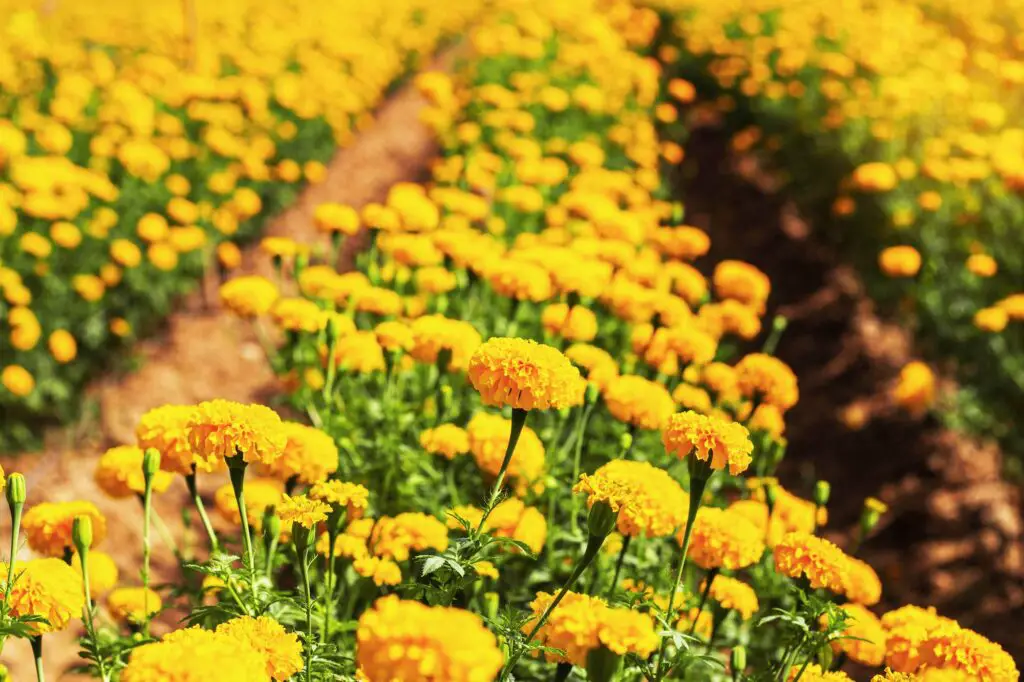
With their bright, cheerful flowers, marigolds add a splash of color to any garden. But they’re not just for show! Marigolds are great at deterring pests like nematodes and cucumber beetles thanks to a compound in their roots called alpha-terthienyl, which is toxic to these pests.
2. Nasturtium

This flowering plant has a reputation for repelling a host of garden pests, including aphids, beetles, and whiteflies. Its vibrant flowers also attract pollinators, enhancing the overall health of your garden.
3. Beans

Beans are a gardener’s best friend. They belong to the legume family, known for their ability to fix nitrogen from the atmosphere into the soil. This natural fertilizer enriches the soil and promotes vigorous growth in cucumbers.
4. Corn
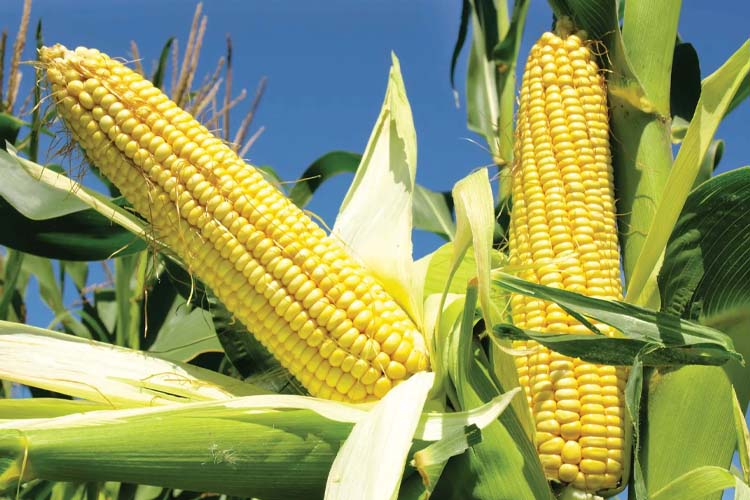
Corn and cucumbers are an age-old companion planting duo. The tall corn stalks provide natural shade for heat-sensitive cucumbers and also act as a living trellis for vining cucumber varieties.
5. Radish

It’s surprising, but radishes can help protect your cucumbers. When planted alongside cucumbers, they deter cucumber beetles, one of the most destructive pests for cucumber plants.
6. Sunflowers

The towering sunflower can act as a protective guardian for your cucumber plants. They provide much-needed shade, and act as windbreaks, and their heavy pollen attracts beneficial insects that prey on cucumber pests.
7. Peas

Like beans, peas are nitrogen-fixers, enriching the soil and promoting healthy growth in cucumbers. They also have a small footprint, making them ideal for smaller gardens or for intercropping.
8. Oregano
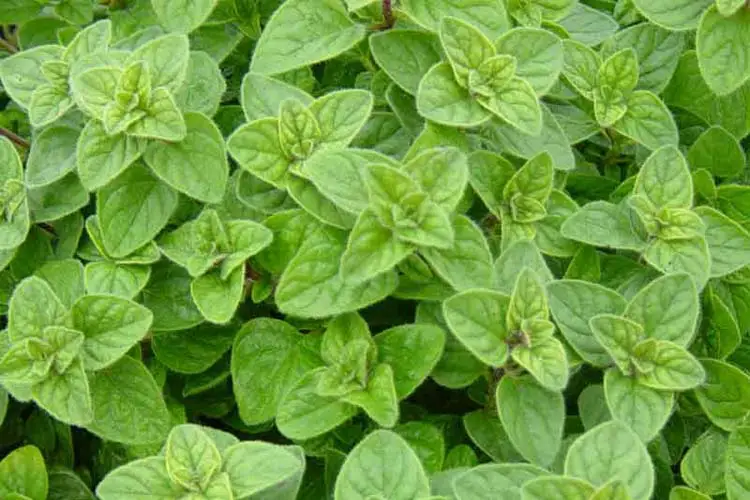
Oregano is more than just a kitchen staple; it’s a potent deterrent for several garden pests thanks to its strong scent. Plant it near your cucumbers to ward off pests and to promote general garden health.
9. Dill
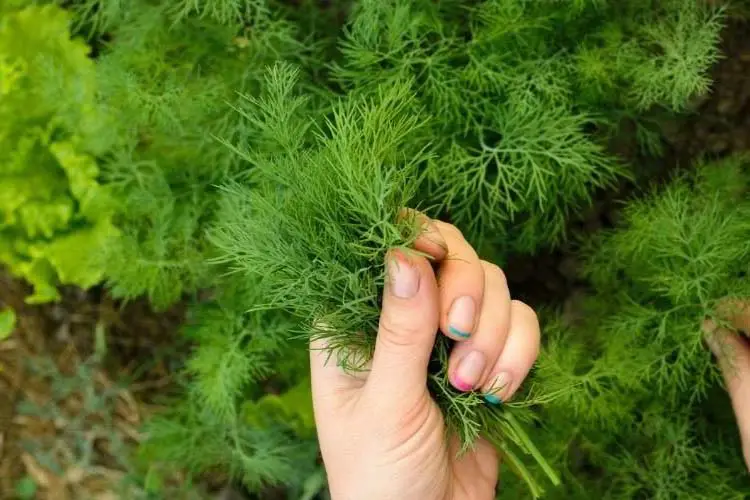
This herb is an excellent companion for cucumbers during their early growth stages. Dill attracts beneficial predators, like wasps and other predatory insects, which keep potential pests at bay.
10. Borage

Known as a “magic bullet” in the gardening world, borage deters harmful insects and worms. It also attracts bees and other pollinators, which can help increase cucumber yield.
11. Tansy
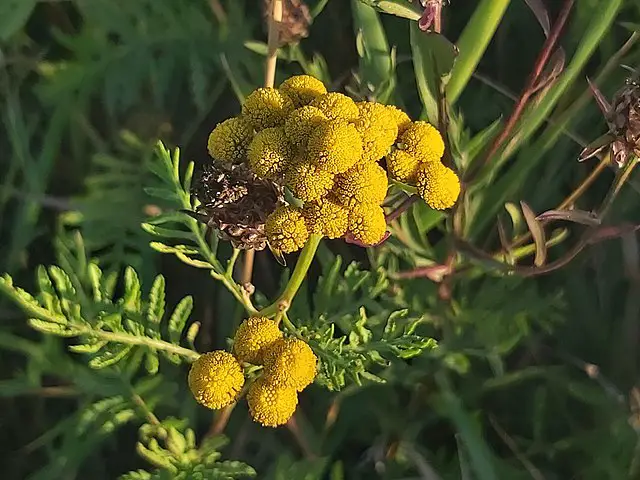
This hardy perennial is known to repel cucumber beetles and ants. Plus, its small, yellow flowers can attract beneficial predatory insects and pollinators to your garden.
12. Cabbage Family (Broccoli, Kale, etc.):
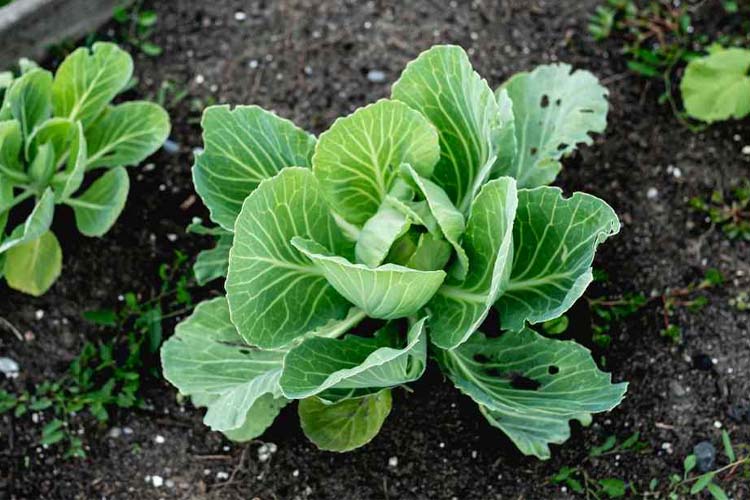
These leafy greens are excellent companions for cucumbers. They help deter pests that cucumbers are susceptible to and can provide light shade, which cucumbers may appreciate in hotter climates.
Through thoughtful companion planting, you can create a symbiotic environment where each plant helps the other, leading to a healthier, more productive garden. Stay with me as we explore how to implement these companions in various garden scenarios.
Specific Companion Planting Scenarios
As an experienced gardener with over 13 years under my belt, I understand that not every garden is the same. The size, location, and even the gardener’s personal preferences can significantly influence how a garden is laid out. Let’s look at some specific companion planting scenarios that cater to different gardening situations.
1. Companion Planting Plans for Small Gardens
In a small garden, space is at a premium. Here’s a simple layout that allows for companion planting with cucumbers:
- Row 1: Plant a row of marigolds along the northern edge of your garden (assuming you’re in the Northern Hemisphere) to prevent them from shading the other plants.
- Row 2: Plant cucumber plants, leaving about a foot of space between each plant. This allows enough space for the cucumber vines to grow
- Row 3: Plant bush beans or peas. These plants will enrich the soil with nitrogen and have a relatively small footprint, saving space.
- Row 4: On the southern end, plant radishes. They’ll grow quickly and can be harvested early in the season, giving the cucumbers more room to spread out.
2. Companion Planting Plans for Larger Gardens or Farms
For larger gardens or farms, you have a bit more flexibility and can incorporate more variety into your companion planting:
- Row 1: Plant a row of sunflowers along the northern edge of the garden. They’ll act as a windbreak and provide some shade without blocking the sun from other plants.
- Row 2 and 3: Plant two rows of cucumbers. The vines will have plenty of space to spread out and grow.
- Row 4: Plant a row of bush beans or peas between the rows of cucumbers. They will help enrich the soil with nitrogen and also break the pest cycle.
- Row 5: On the southern end, plant nasturtiums or marigolds. They’ll deter pests, and as the cucumbers grow, they can provide ground cover, helping to control weeds and conserve moisture.
3. Companion Planting in Container Gardens
If you’re working with container gardens or a patio garden, you can still practice companion planting:
- Container 1: Plant a cucumber plant in the center of a large container.
- Container 2: In a separate container, plant some dwarf marigolds or nasturtiums. Place this container near the cucumber to help deter pests.
- Container 3: In another container, plant beans or peas. Although they won’t be directly enriching the soil for the cucumbers, having them nearby can attract beneficial insects and aid overall garden health.
Remember, these are just guidelines. Feel free to experiment with different companion planting layouts based on your garden’s specific needs and your personal preferences.
Plants to Avoid Planting Near Cucumbers
While companion planting is about creating beneficial relationships between different plants, it’s also crucial to be aware of the plants that may hinder the growth of your cucumbers. After over a decade of hands-on experience in the field, I’ve found a few plants that cucumbers are better off without:
1. Potatoes
Both cucumbers and potatoes are susceptible to similar fungal diseases, so planting them together can increase the risk of infection. Additionally, both these plants are heavy feeders and might compete for nutrients if planted together.
2. Melons
Although they belong to the same family, cucumbers and melons don’t make the best companions. They are both susceptible to the same pests and diseases, increasing the risk of a problem spreading between the two crops.
3. Sage
This aromatic herb is known to inhibit the growth of cucumber plants. Its strong scent, which we often enjoy in our kitchens, can be overpowering for cucumber plants and stunt their growth.
4. Strong-Smelling Herbs
Some strong-smelling herbs, like basil and rosemary, may not be the best companions for cucumbers. Their strong odors can potentially repel pollinators, reducing the chances of your cucumber flowers getting pollinated.
In my 13 years of gardening, I’ve discovered that avoiding these problematic pairings can significantly affect your cucumber harvest. Understanding these antagonistic relationships allows us to better plan our gardens and set our cucumbers up for success.
Frequently Asked Questions About Cucumber Companion Planting
Can I plant cucumbers and tomatoes together?
Yes, cucumbers and tomatoes can be planted together. They have similar sunlight and watering needs, which makes them compatible. However, be aware that both plants are heavy feeders, so adequate fertilization is essential.
Is it necessary to use all the listed companion plants for cucumbers?
Not at all. The list is intended as a guide, and it’s not necessary (or practical) to use all of them. Choose companion plants based on your garden’s specific needs, your climate, and your personal preferences.
Can cucumbers grow in the shade?
Cucumbers prefer full sun but can tolerate a bit of shade, especially in hotter climates. However, too much shade can inhibit growth and decrease yield, so it’s a balance.
How do I arrange the plants in my garden?
This depends on your garden’s size, your chosen plants, and their specific needs. For example, taller plants should usually be placed to the north to avoid shading smaller ones. Ground cover plants can be interspersed among taller ones to suppress weeds and conserve moisture.
How can I use companion planting in a small space or container garden?
Even in a small space, you can still take advantage of companion planting. Choose plants with different heights to maximize vertical space, or use trellises for climbing plants like cucumbers. Dwarf or compact varieties of certain plants can also be a good choice for container gardens.
Wrapping Up
In conclusion, companion planting is a practice that can offer numerous benefits, particularly for cucumbers. From the humble marigold to the towering sunflower, each plant has a role to play in your garden’s health and productivity. Experiment with different combinations, observe the results, and most importantly, enjoy the process.





